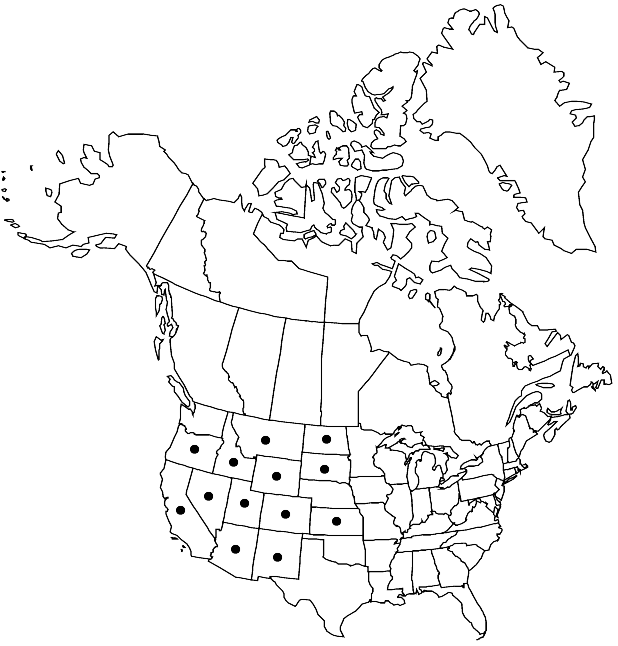Stanleya pinnata var. pinnata
Cauline leaves: blade oblanceolate to broadly lanceolate, margins (at least proximal ones) lyrate-pinnatifid or runcinate. Flowers: sepals 9–16 mm; petals 10–20 mm, claw 5–10 mm; gynophore 10–28 mm, pubescent basally. Fruits 3–9 cm; ovules 22–38 per ovary. Seeds 2.5–4 mm. 2n = 28, 56.
Phenology: Flowering Apr–Sep.
Habitat: Prairie hills, chalk bluffs, shale slopes, talus, sagebrush and mixed shrub communities, pinyon-juniper areas, selenium-rich areas, barren hillsides, sandstone breaks and cliffs, dry sandy or gravelly washes, sand dunes, canyon bottoms, soils derived from limestone, sandstone, basaltic, and volcanic rocks
Elevation: 200-2500 m
Distribution

Ariz., Calif., Colo., Idaho, Kans., Mont., Nev., N.Mex., N.Dak., Oreg., S.Dak., Utah, Wyo.
Discussion
Subshrubby or shrubby forms of var. pinnata were recognized as a distinct var. or subsp. inyoensis. Although such growth forms occur primarily in southern California, western Nevada, and southwestern Utah, they occur sporadically throughout the species range, especially in desert habitats with sand dunes.
Selected References
None.
Lower Taxa
"elongated" is not a number."thick" is not a number."dm" is not declared as a valid unit of measurement for this property."dm" is not declared as a valid unit of measurement for this property.